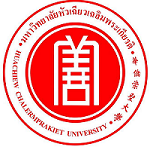กรุณาใช้ตัวระบุนี้เพื่ออ้างอิงหรือเชื่อมต่อรายการนี้:
https://has.hcu.ac.th/jspui/handle/123456789/3668ระเบียนเมทาดาทาแบบเต็ม
| ฟิลด์ DC | ค่า | ภาษา |
|---|---|---|
| dc.contributor.author | Somkamon Manchun | - |
| dc.contributor.author | Sitthiphong Soradech | - |
| dc.contributor.author | Krongkan Kingkaew | - |
| dc.contributor.author | Parapat Sobharaksha | - |
| dc.contributor.author | Pornsak Sriamornsak | - |
| dc.contributor.author | Sirinan Tubtimted | - |
| dc.contributor.author | สมกมล แม้นจันทร์ | - |
| dc.contributor.author | สิทธิพงศ์ สรเดช | - |
| dc.contributor.author | กรองกาญจน์ กิ่งแก้ว | - |
| dc.contributor.author | ปารภัทร โศภารักษ์ | - |
| dc.contributor.author | พรศักดิ์ ศรีอมรศักดิ์ | - |
| dc.contributor.author | ศิรินันท์ ทับทิมเทศ | - |
| dc.contributor.other | Thailand Institute of Scientific and Technological Research | en |
| dc.contributor.other | Thailand Institute of Scientific and Technological Research | en |
| dc.contributor.other | Thailand Institute of Scientific and Technological Research | en |
| dc.contributor.other | Huachiew Chalermprakiet University. Faculty of Pharmaceutical Sciences | en |
| dc.contributor.other | Royal Society of Thailand. Academy of Science | en |
| dc.contributor.other | Thailand Institute of Scientific and Technological Research | en |
| dc.date.accessioned | 2025-02-14T14:01:23Z | - |
| dc.date.available | 2025-02-14T14:01:23Z | - |
| dc.date.issued | 2019 | - |
| dc.identifier.citation | Key Engineering Materials 819 (August 2019): 187–92. | en |
| dc.identifier.other | https://doi.org/10.4028/www.scientific.net/kem.819.187 | - |
| dc.identifier.uri | https://has.hcu.ac.th/jspui/handle/123456789/3668 | - |
| dc.description | สามารถเข้าถึงบทความฉบับเต็ม (Full Text) ได้ที่ : https://www.scientific.net/KEM.819.187 | en |
| dc.description.abstract | Although caffeine was suggested as one of the pharmacological agents for the cellulite treatment, its skin permeation restricted. The present work was aimed at formulating caffeine loaded nanostructured lipid carriers (CAF-NLCs) containing coconut oil as a topical delivery system. CAF-NLCs were prepared by the ultrasonic emulsification method, using coconut oil as a liquid lipid. The proper selection of solid lipid and surfactants for these formulations were investigated. Subsequently, physicochemical properties, entrapment efficacy, stability, and in vitro drug release were evaluated. The CAF-NLCs containing coconut oil was successfully prepared using glyceryl behenate as a solid lipid and showed an interesting entrapment efficiency (62-99%). The obtained CAF-NLCs presented the nanosized range (≈ 60-390 nm), with a low polydispersity index and high negative zeta potential values (over ‐30 mV). However, the type and concentration of surfactant also affected these properties. These results suggested that CAF-NLCs containing coconut oil are the promising carrier for delivery of caffeine following topical application. | en |
| dc.language.iso | en_US | en |
| dc.subject | Caffeine | en |
| dc.subject | คาเฟอีน | en |
| dc.subject | Coconut Oil | en |
| dc.subject | น้ำมันมะพร้าว | en |
| dc.subject | Encapsulation | en |
| dc.subject | เอนแคปซูเลชัน | en |
| dc.subject | Nanostructure Lipid Carriers | en |
| dc.subject | ตัวพาไขมันขนาดนาโน | en |
| dc.title | Design of Caffeine-Loaded Nanostructured Lipid Carriers Containing Coconut Oil for Topical Application | en |
| dc.type | Article | en |
| ปรากฏในกลุ่มข้อมูล: | Pharmaceutical Sciences - Artical Journals | |
แฟ้มในรายการข้อมูลนี้:
| แฟ้ม | รายละเอียด | ขนาด | รูปแบบ | |
|---|---|---|---|---|
| Design-of-Caffeine-Loaded-Nanostructured-Lipid-Carriers-Containing-Coconut-Oil.pdf | 74.87 kB | Adobe PDF | ดู/เปิด |
รายการทั้งหมดในระบบคิดีได้รับการคุ้มครองลิขสิทธิ์ มีการสงวนสิทธิ์เว้นแต่ที่ระบุไว้เป็นอื่น
